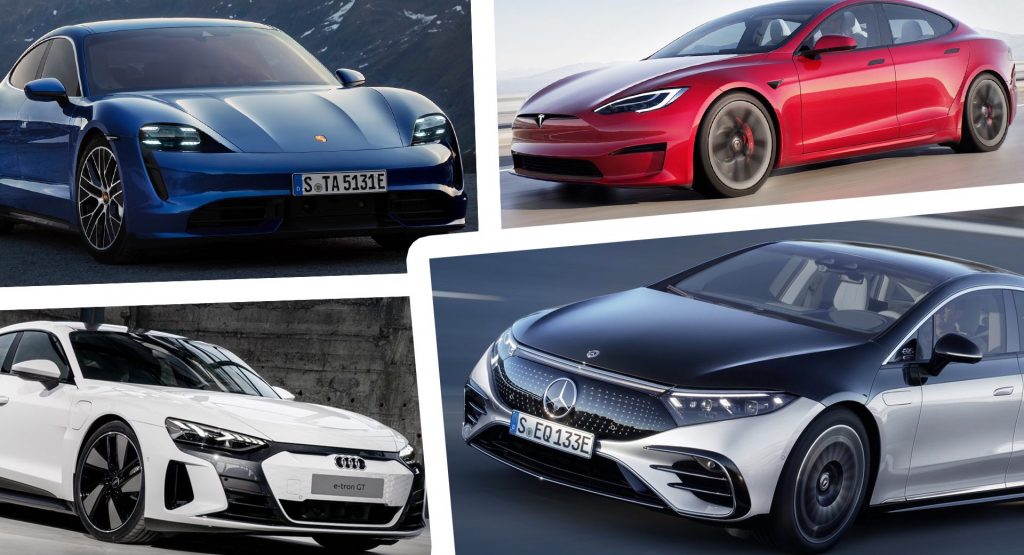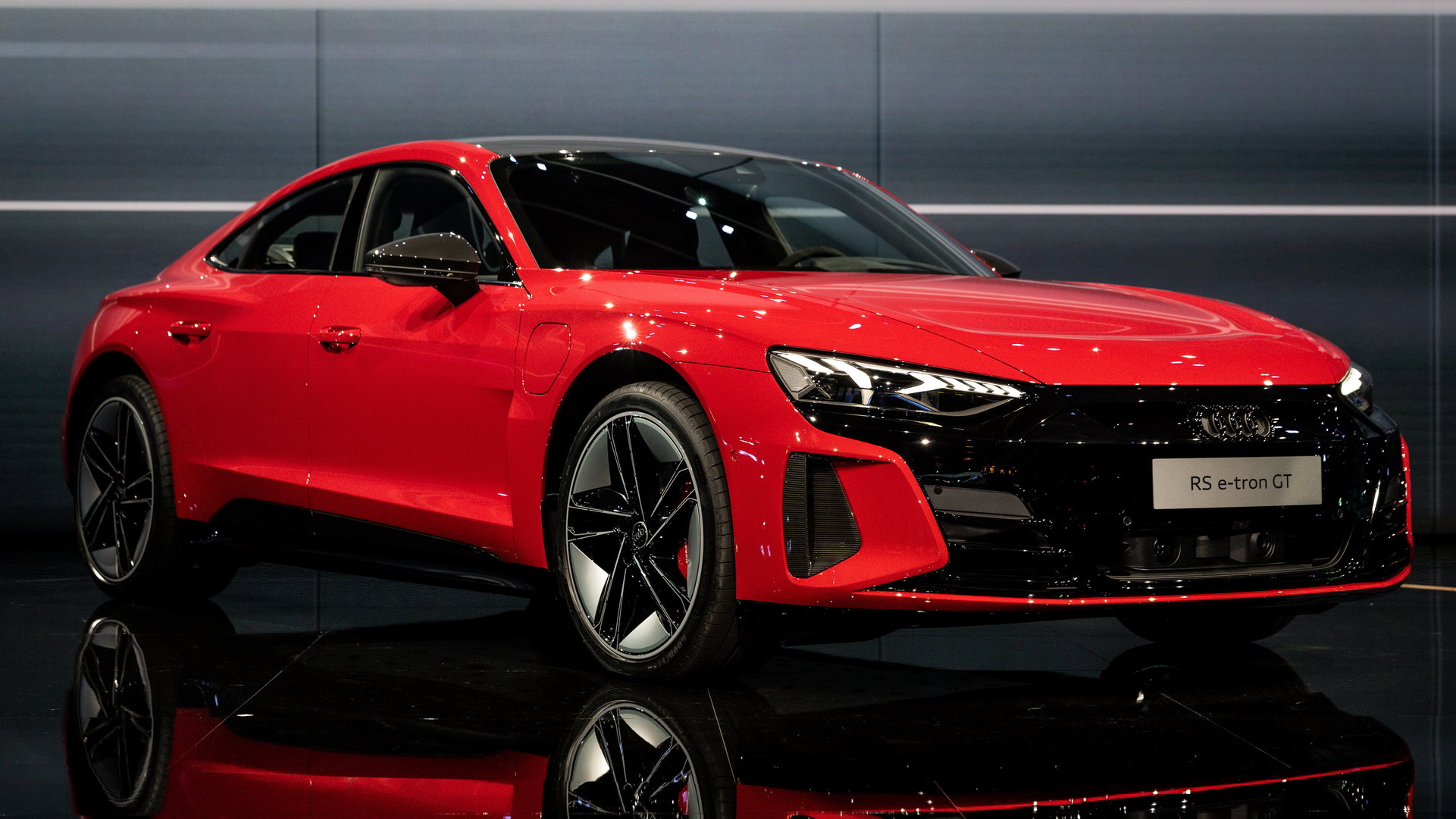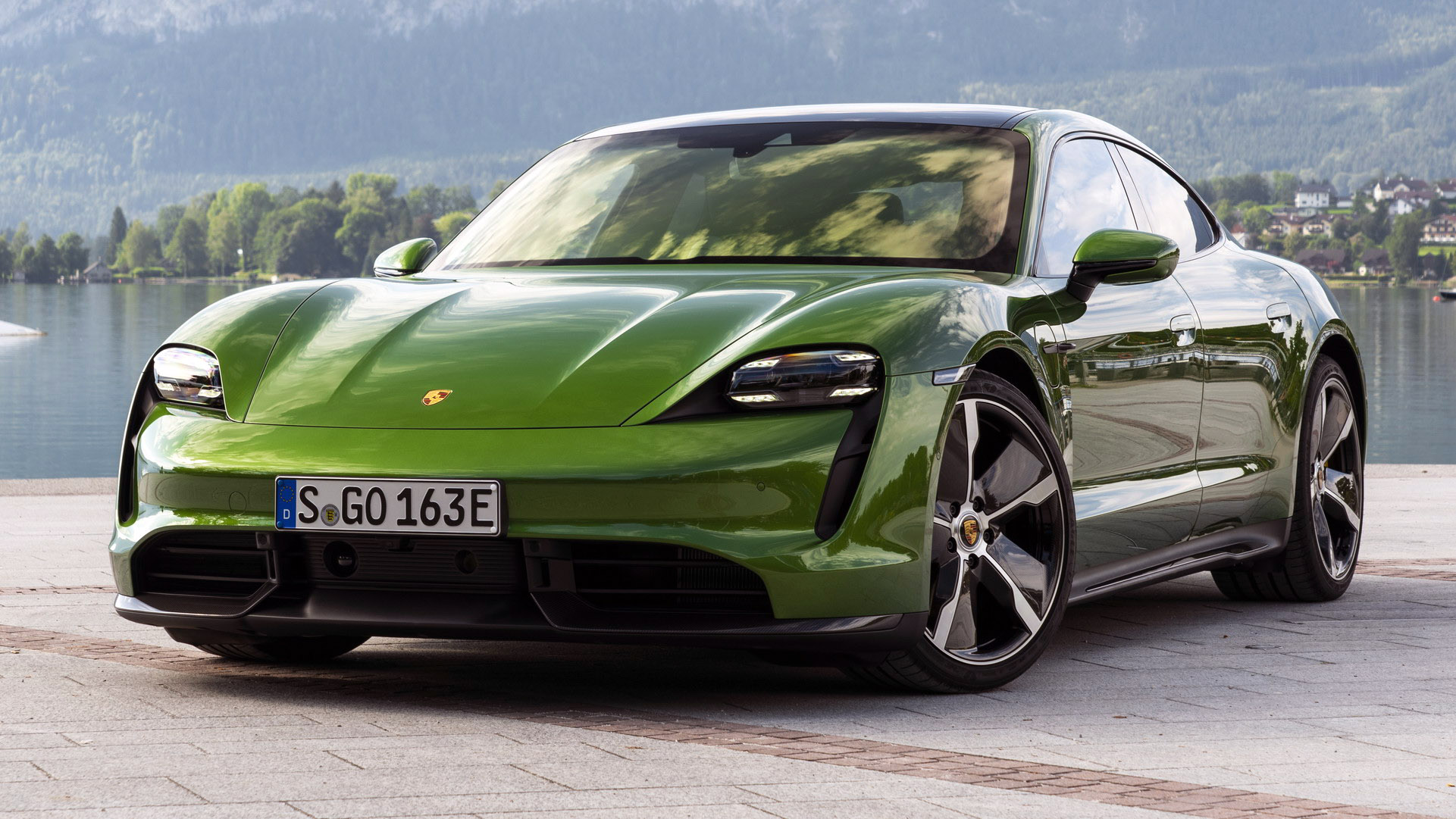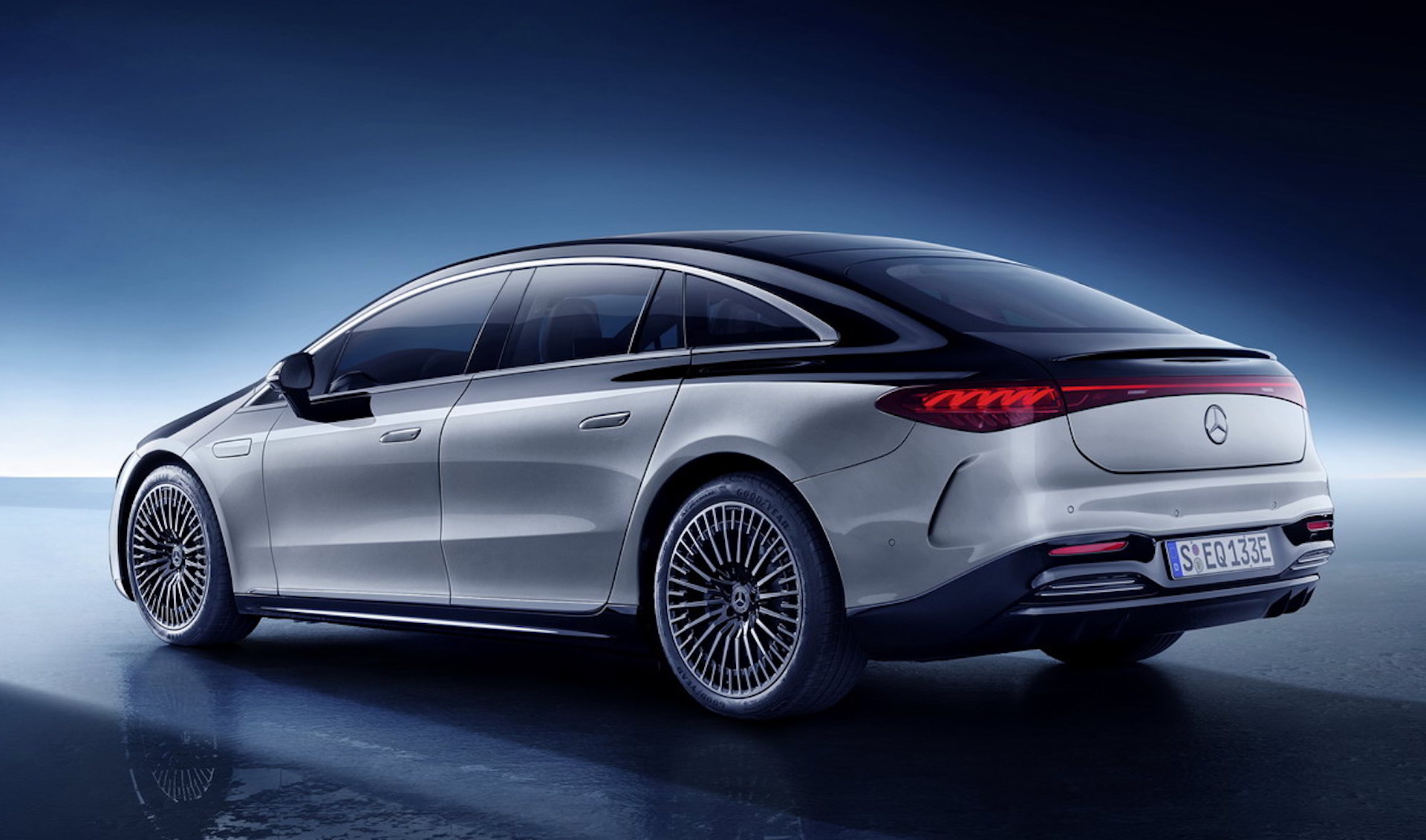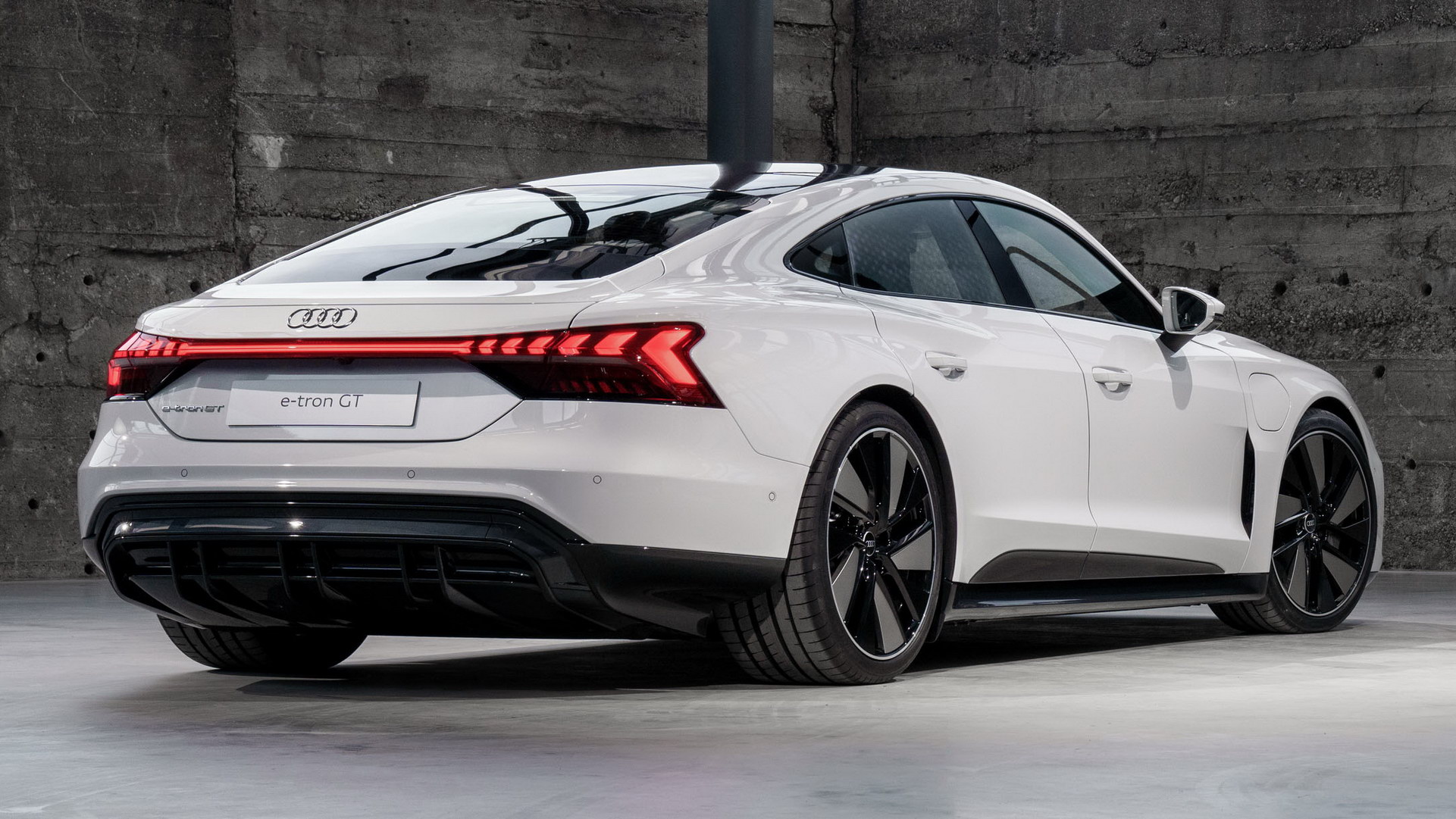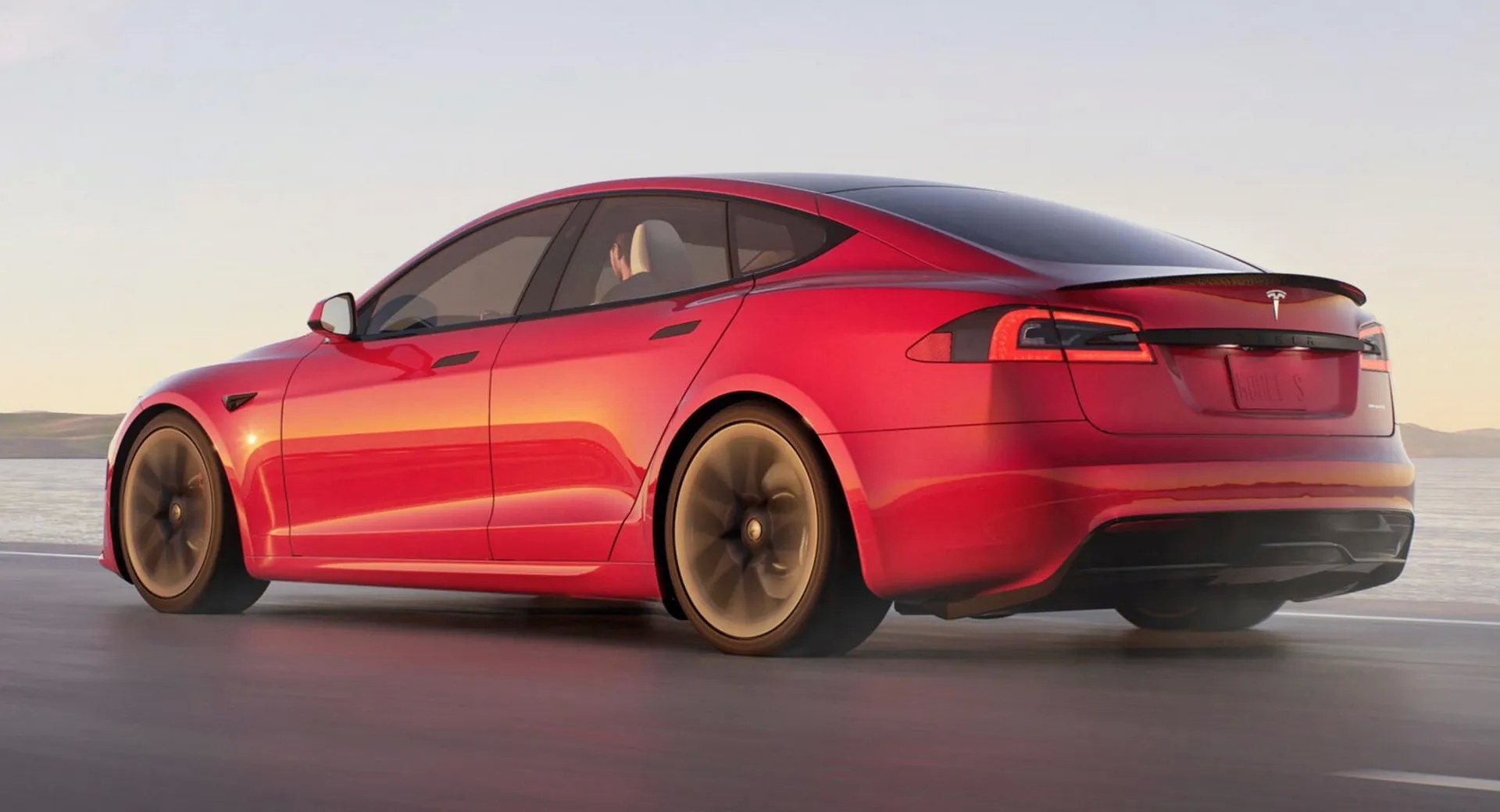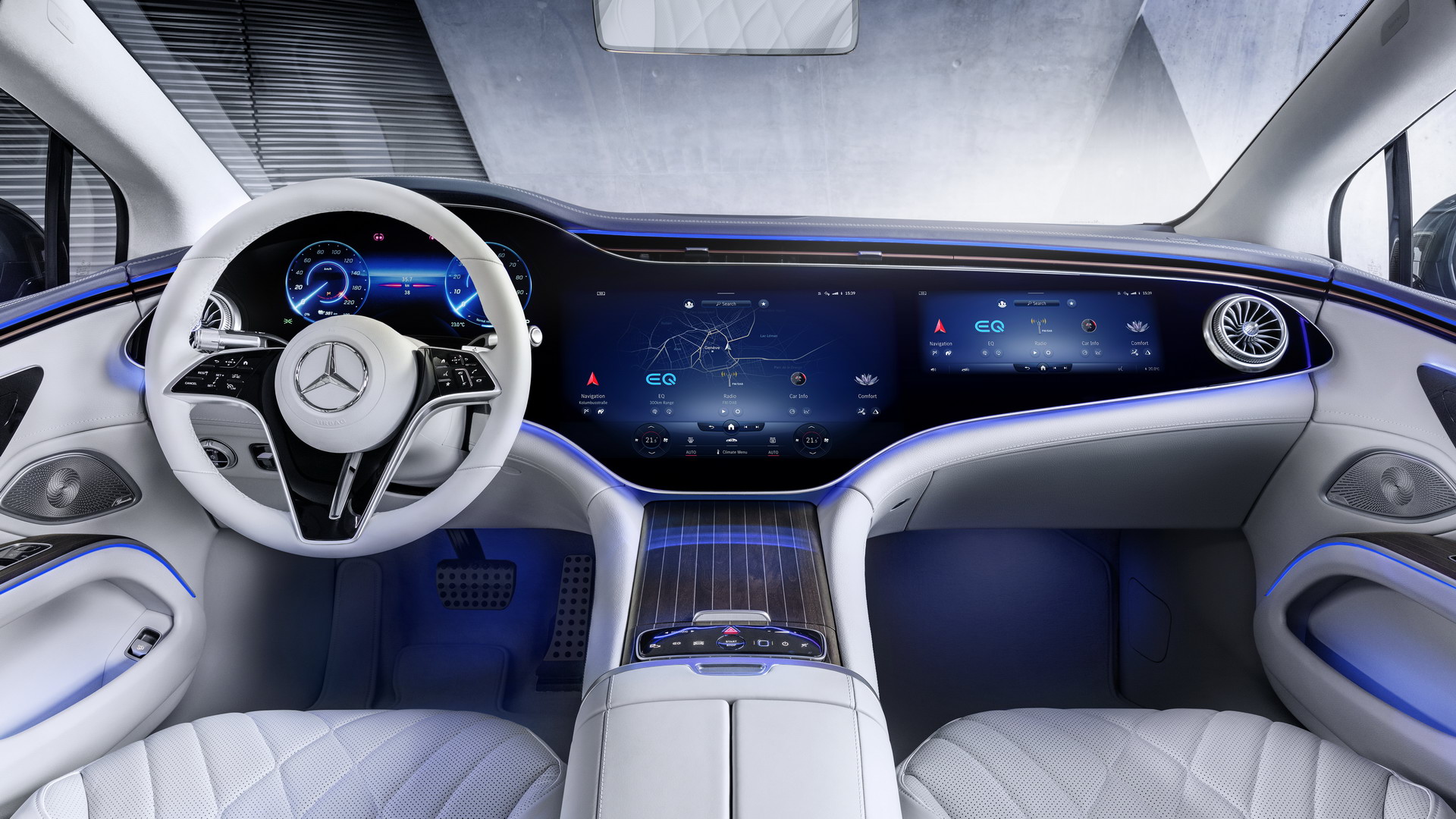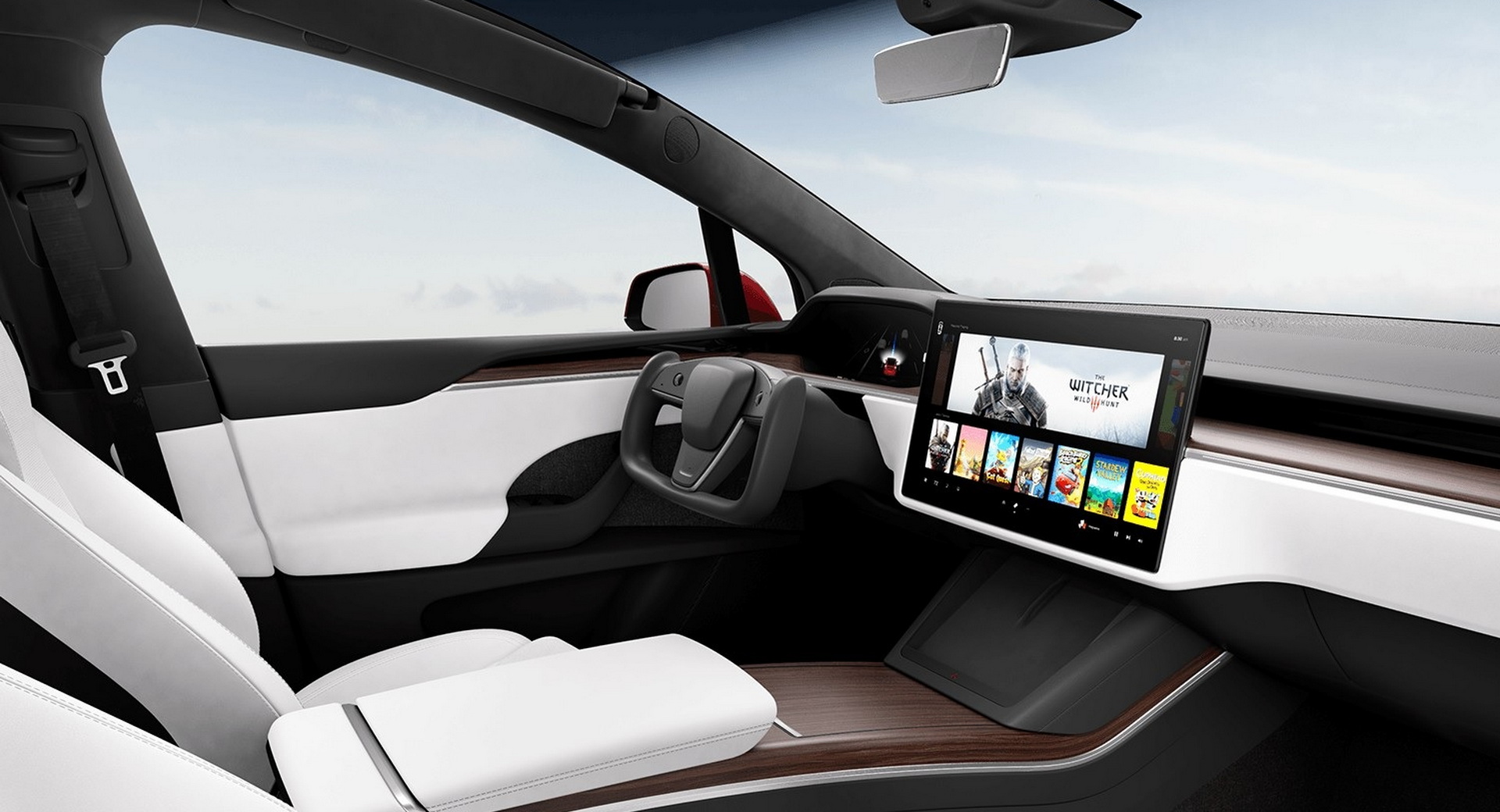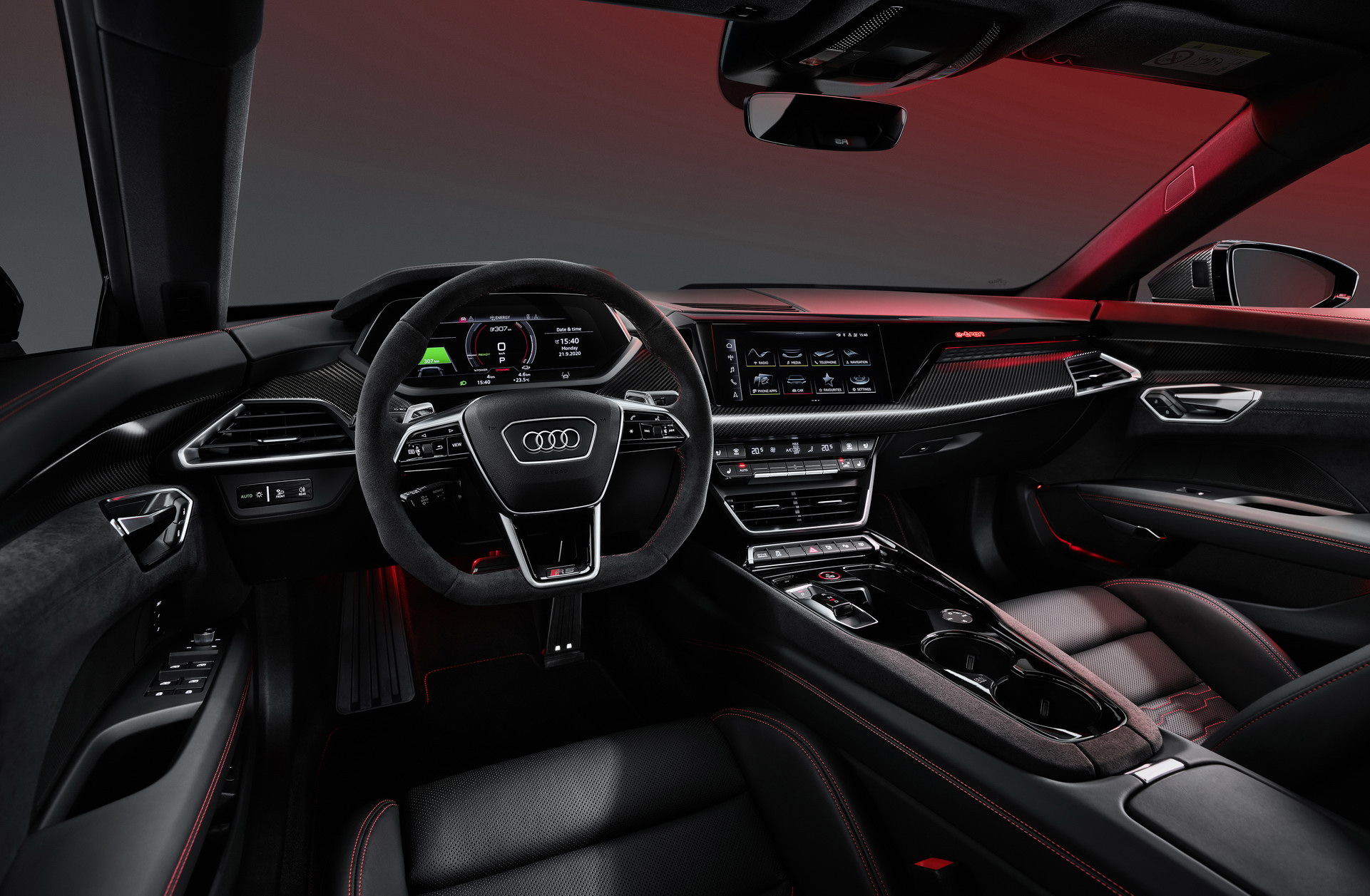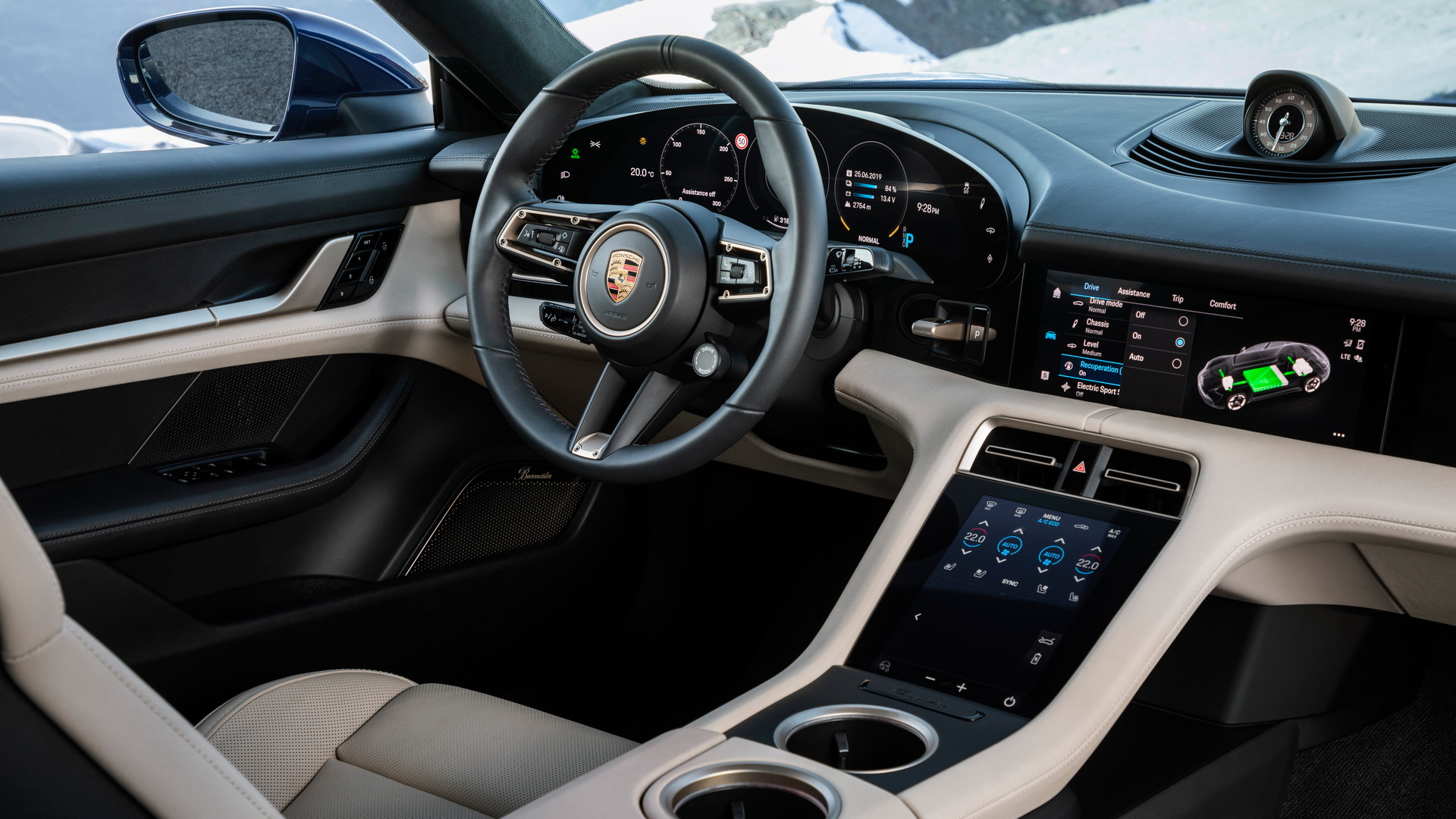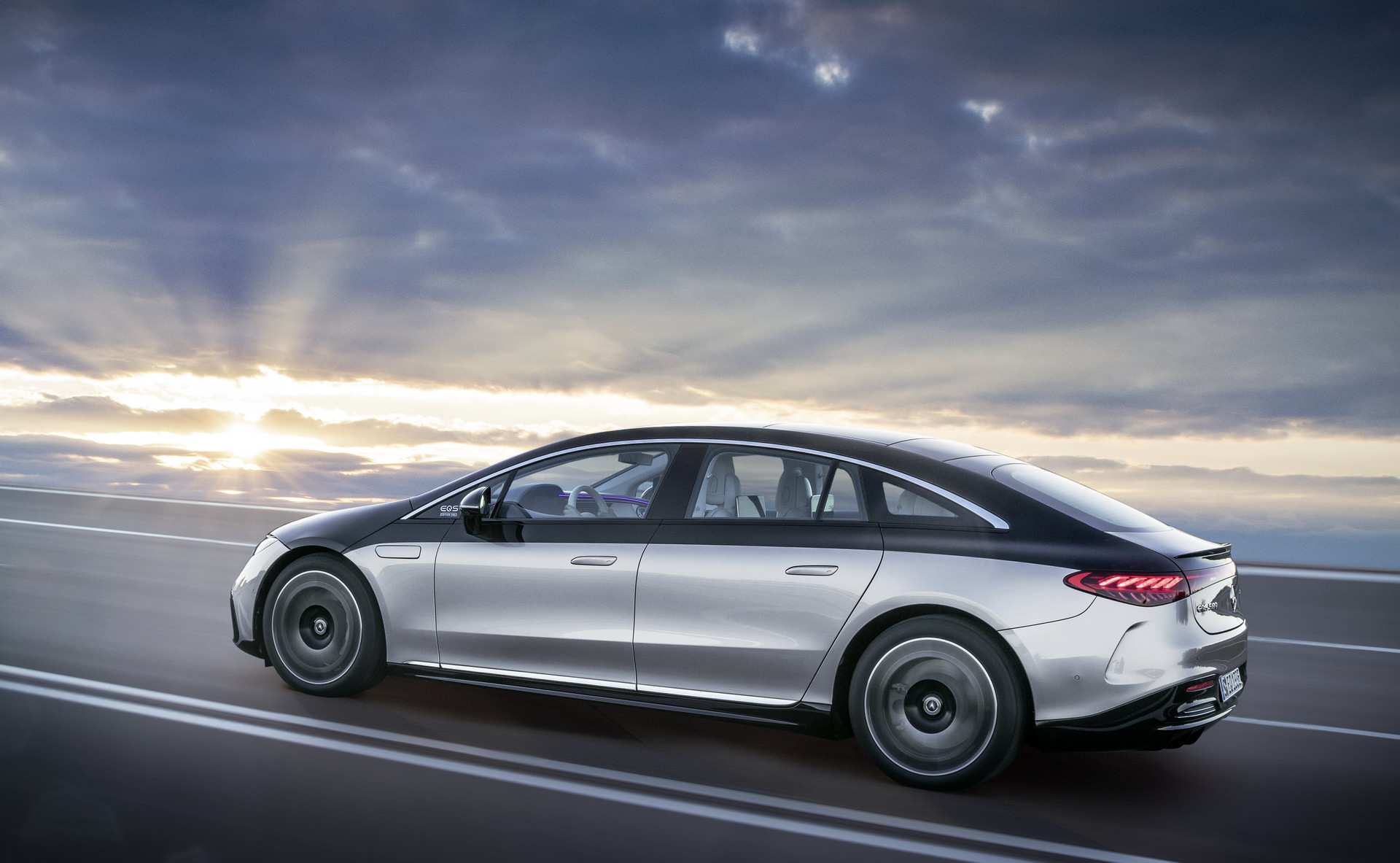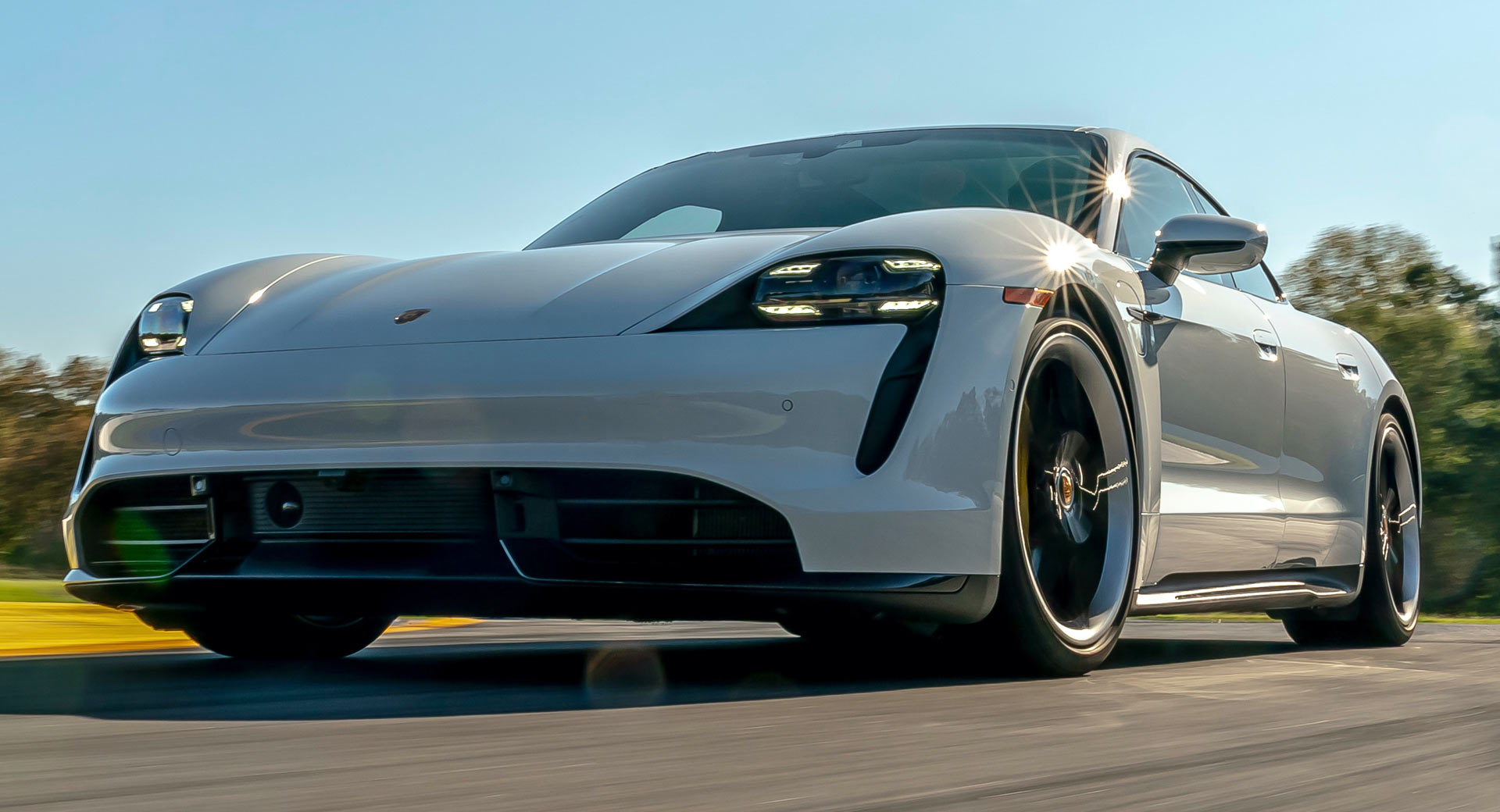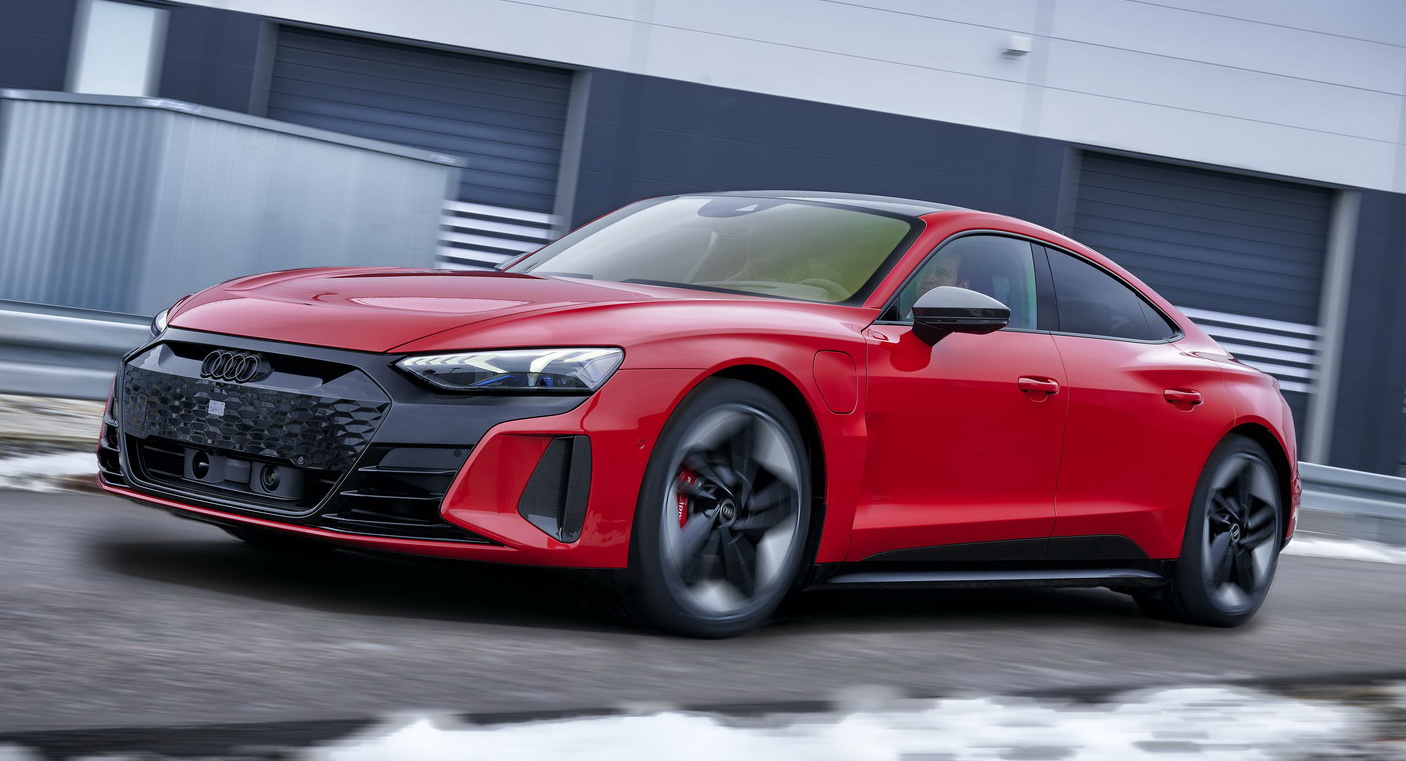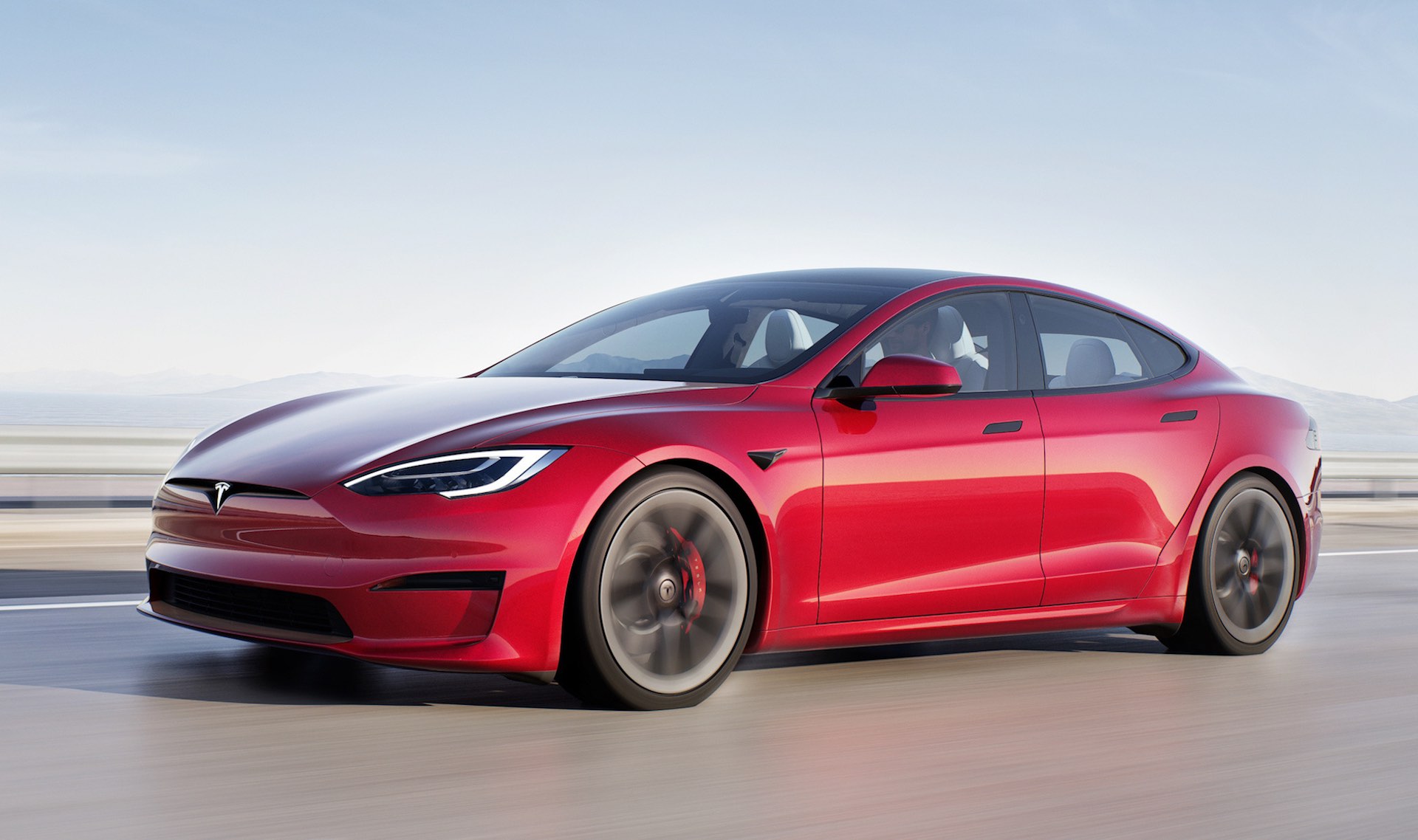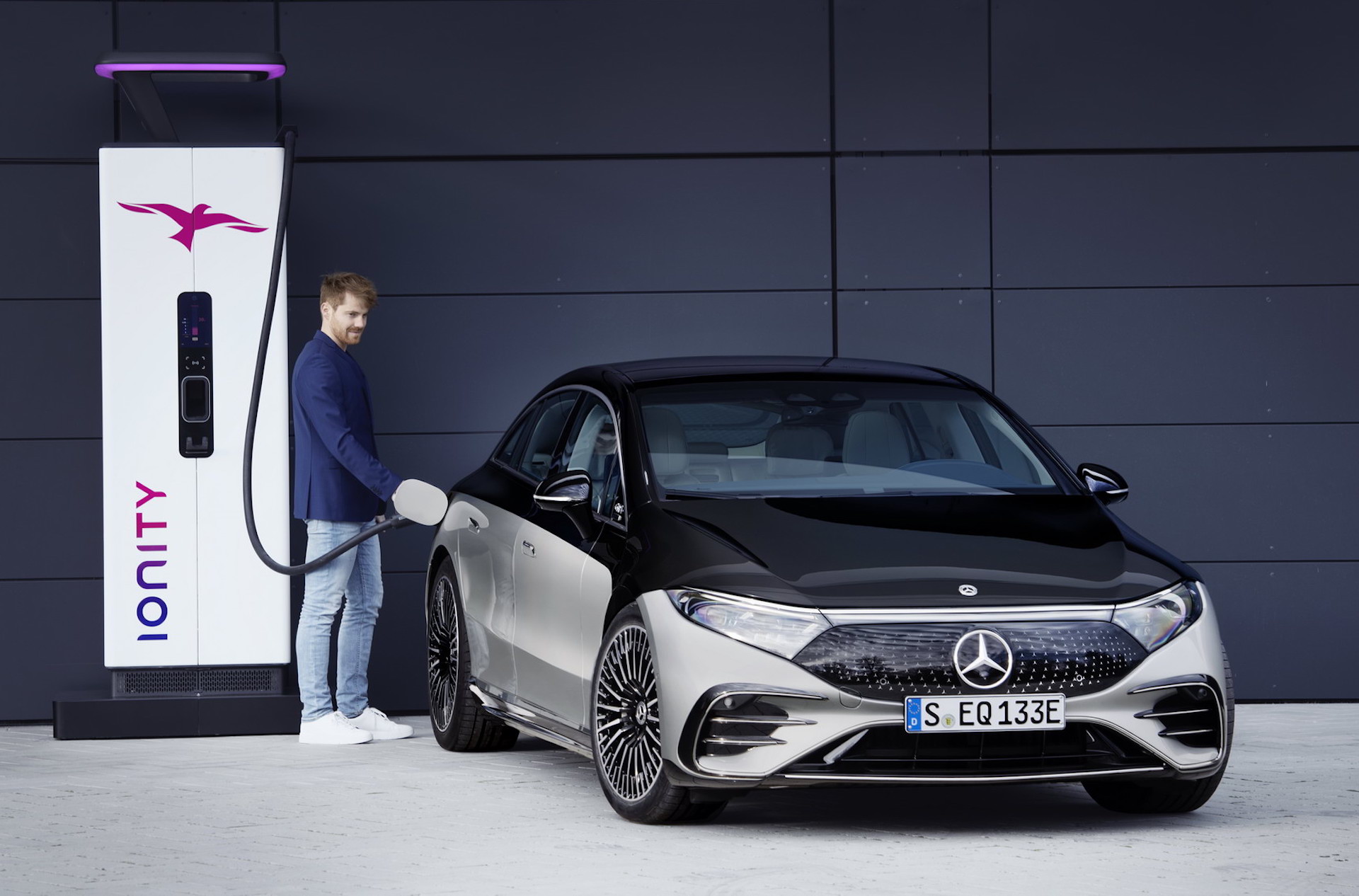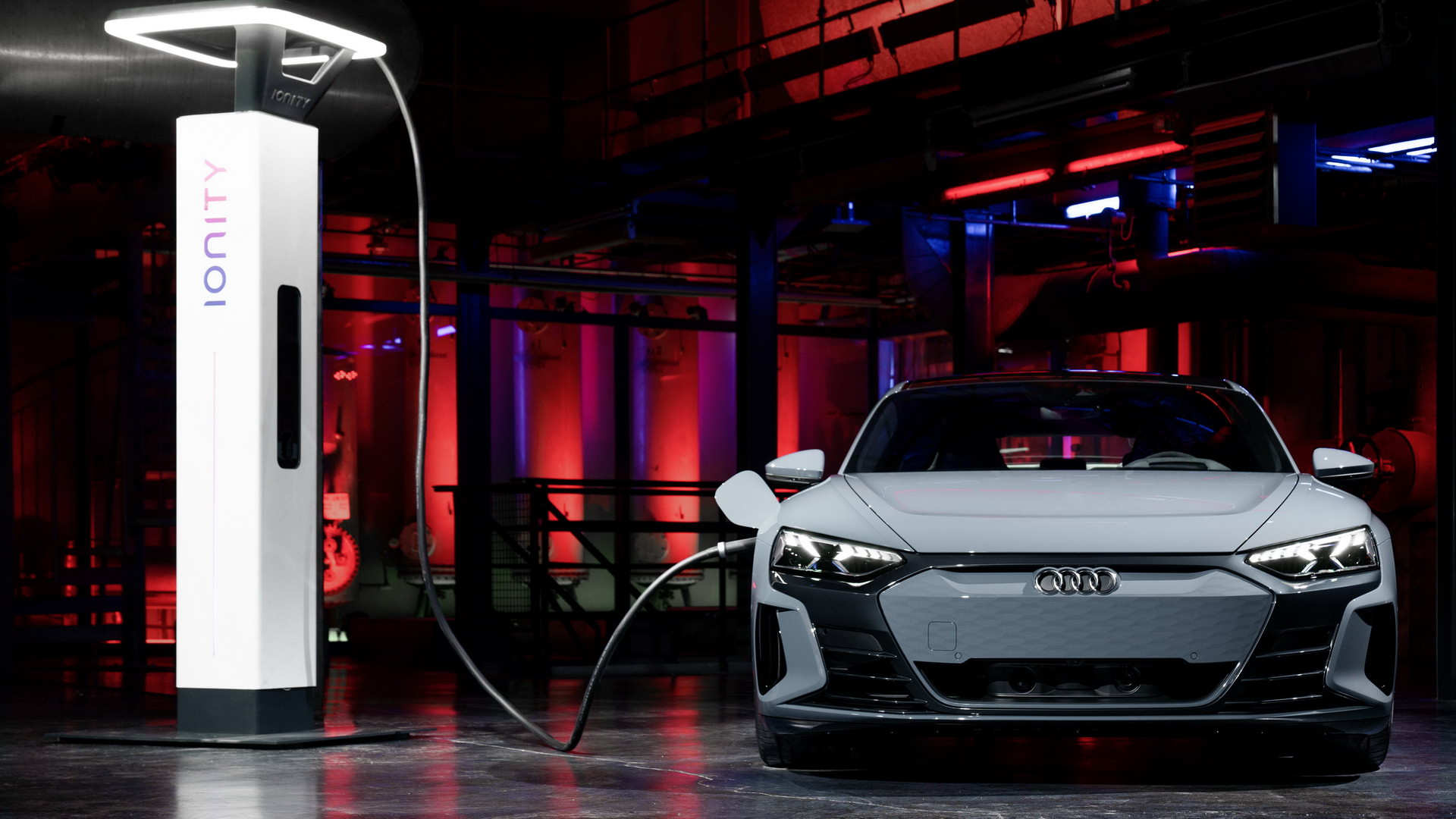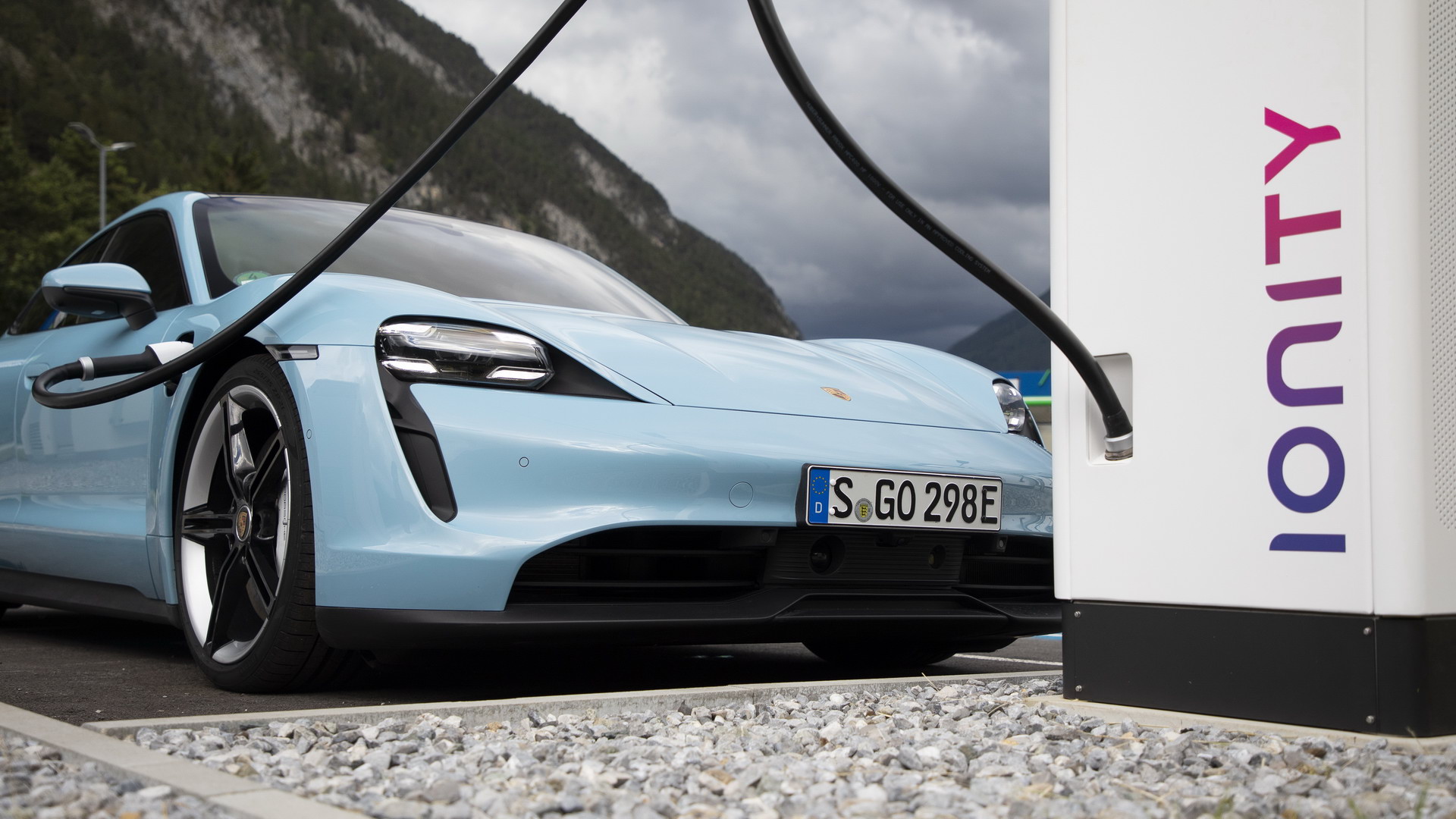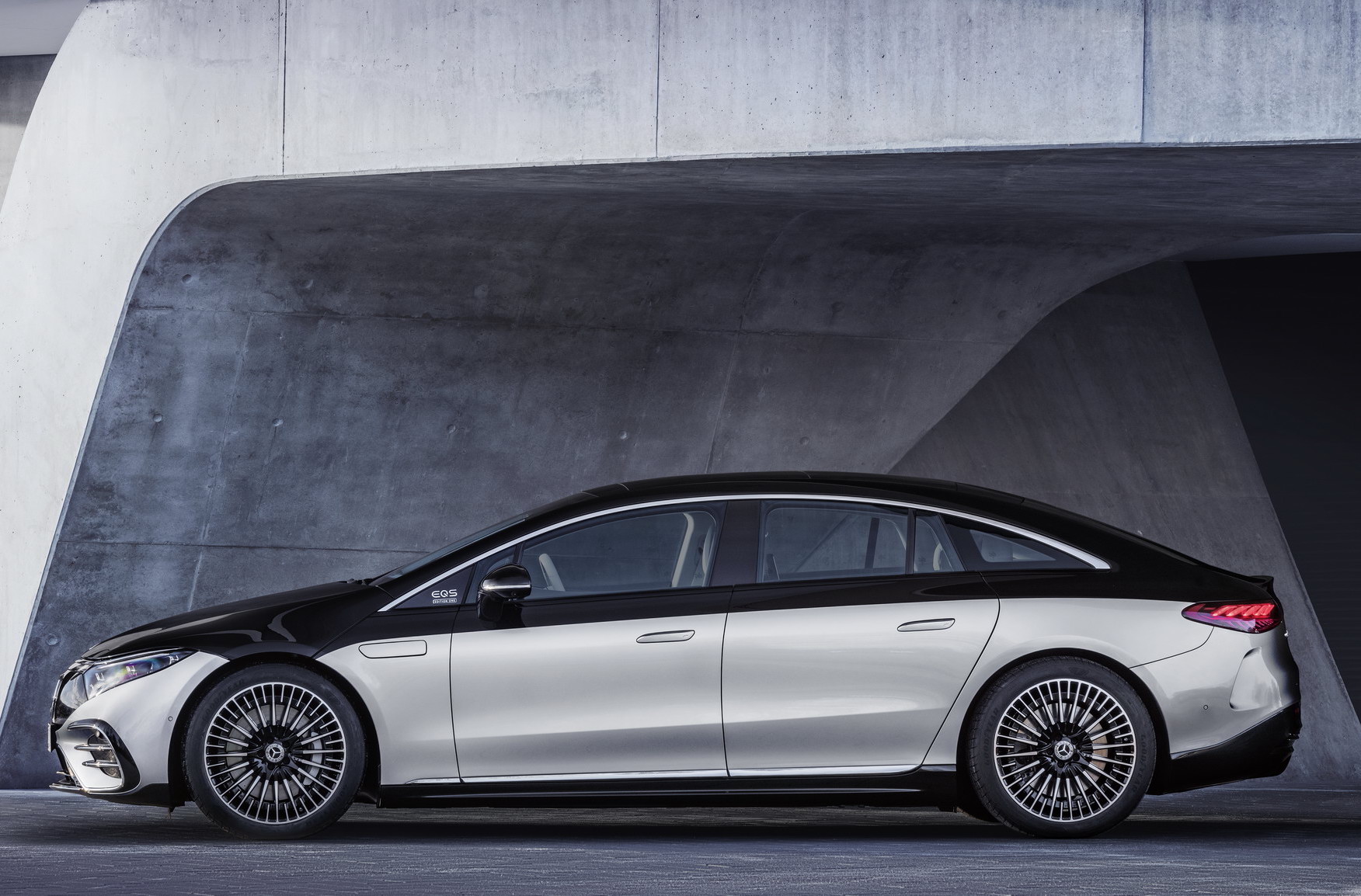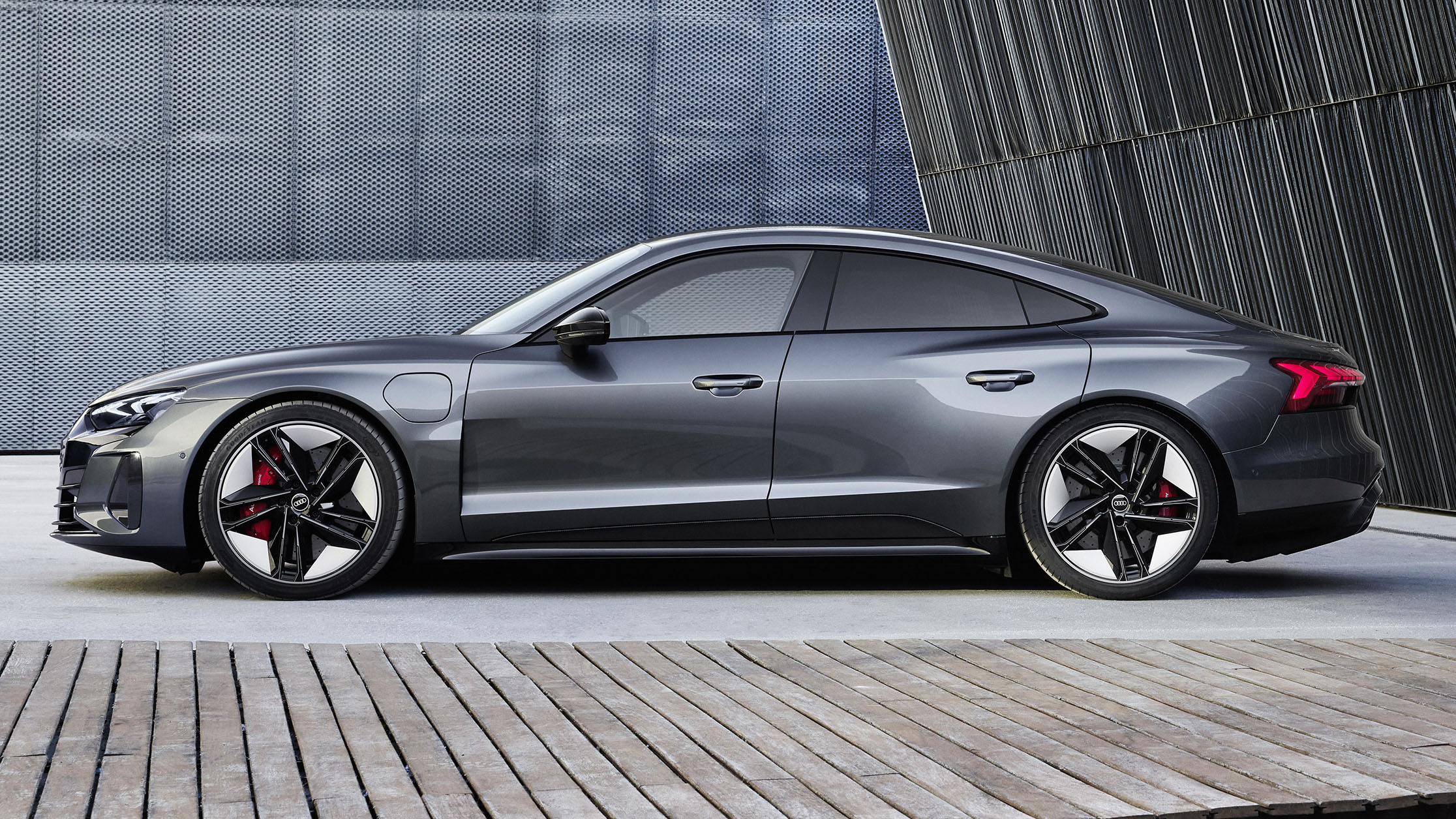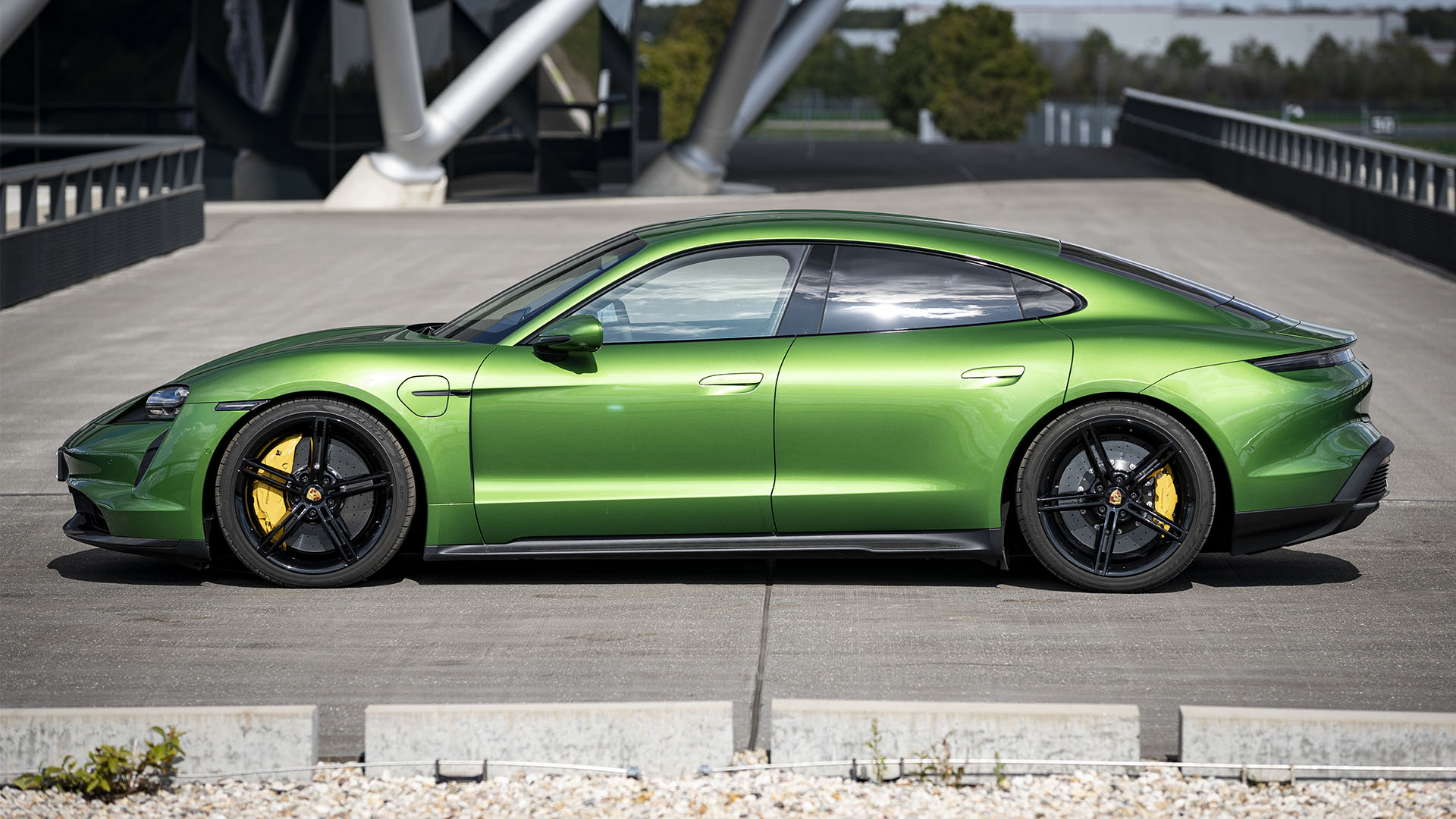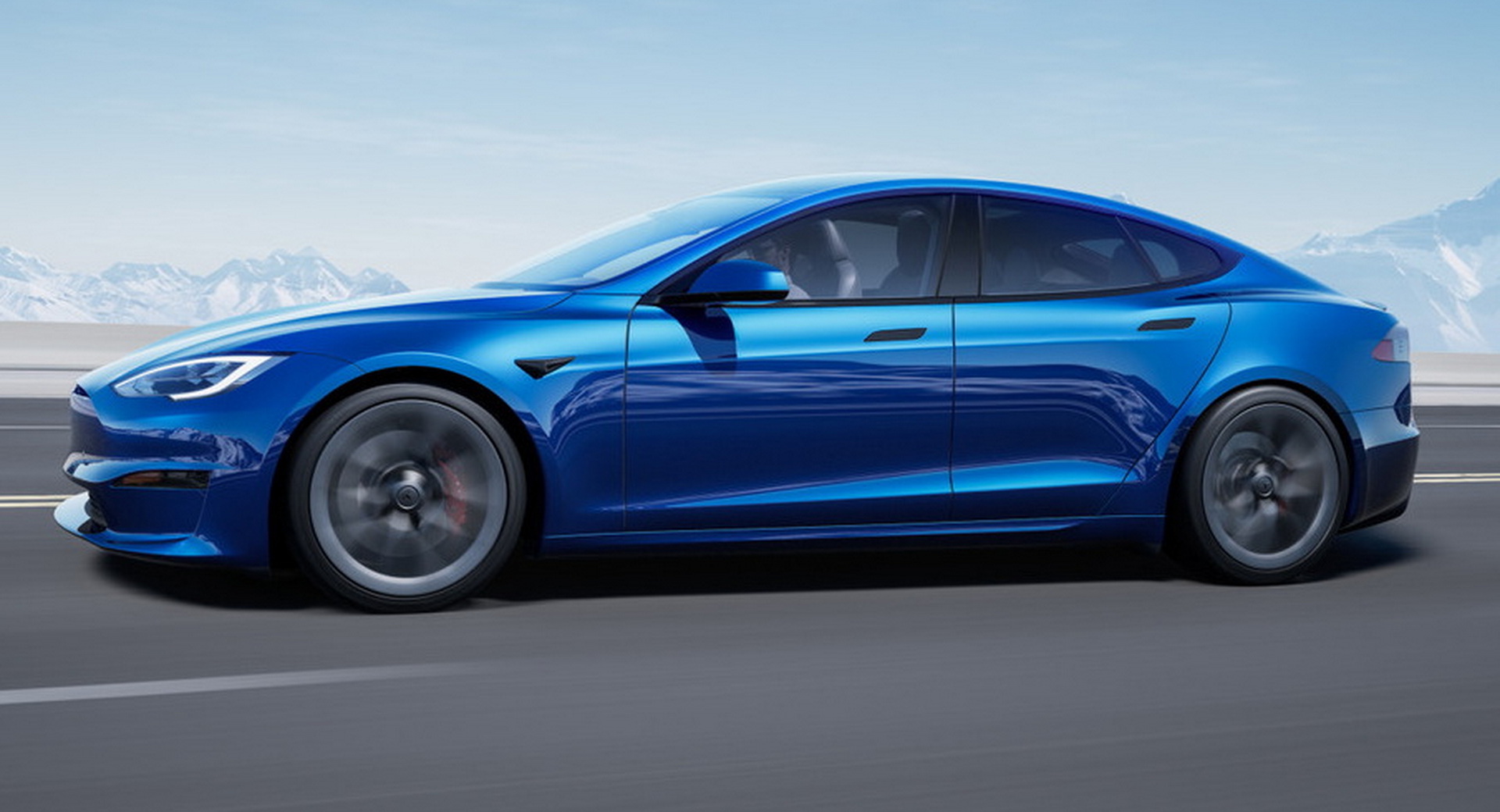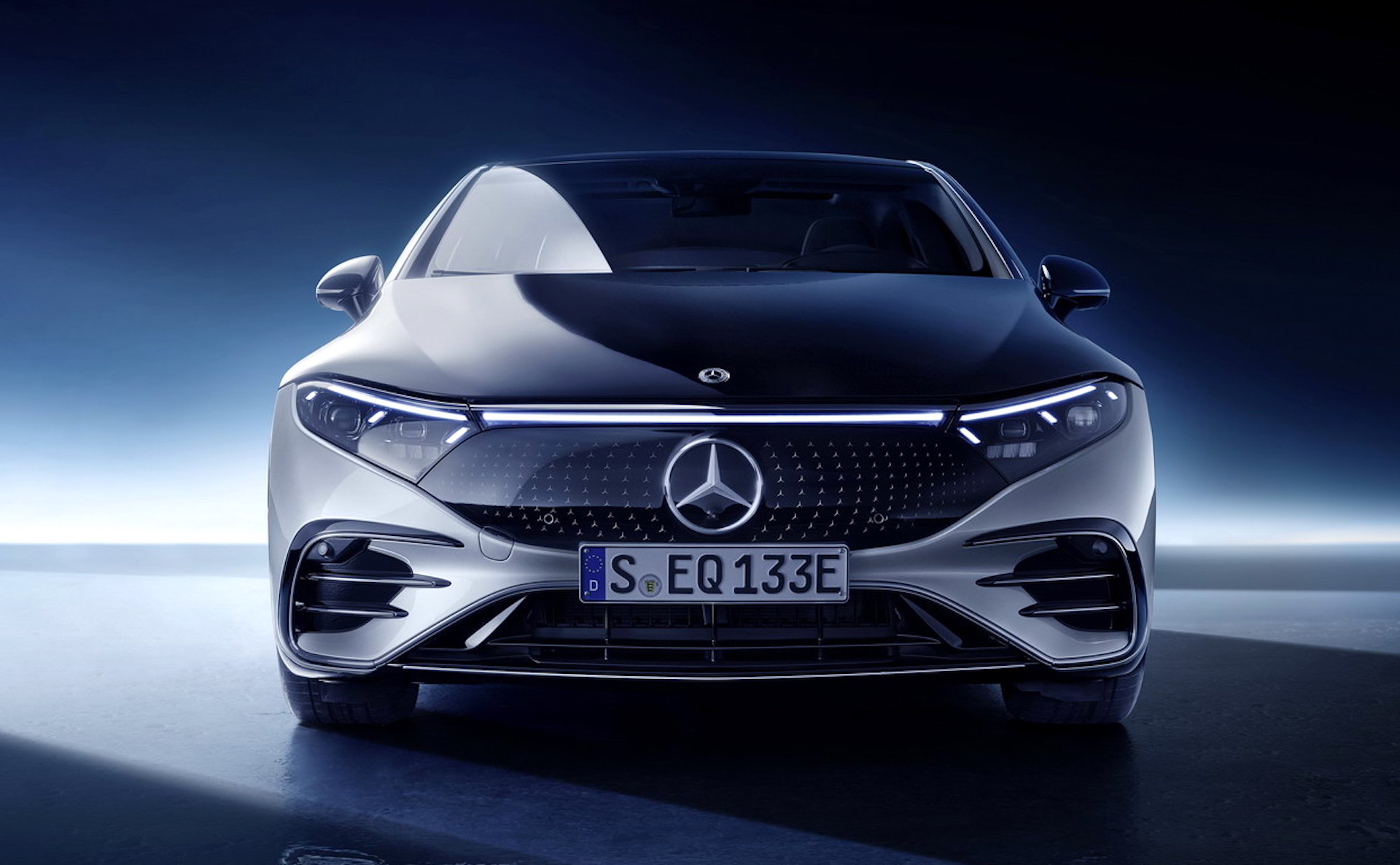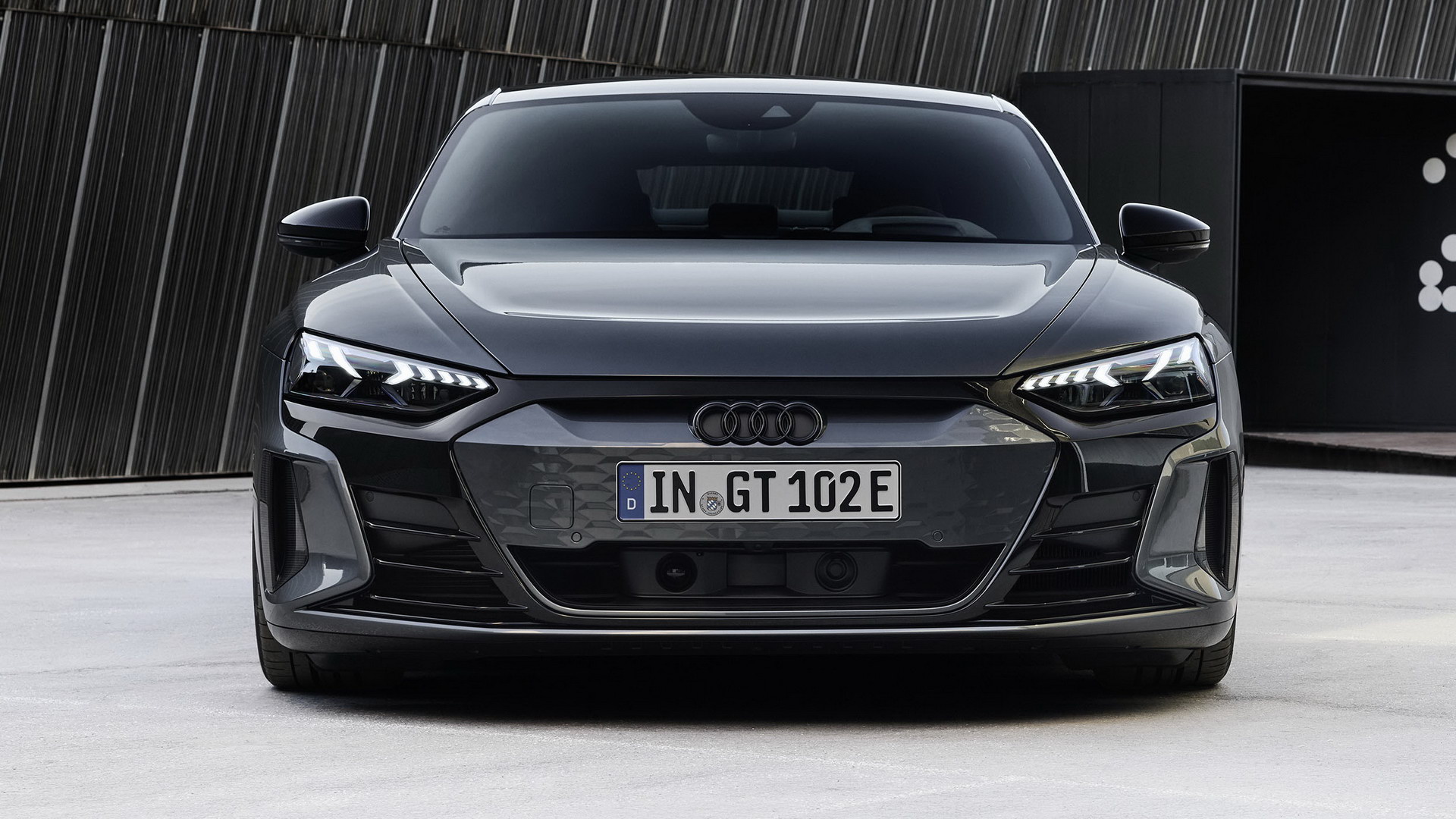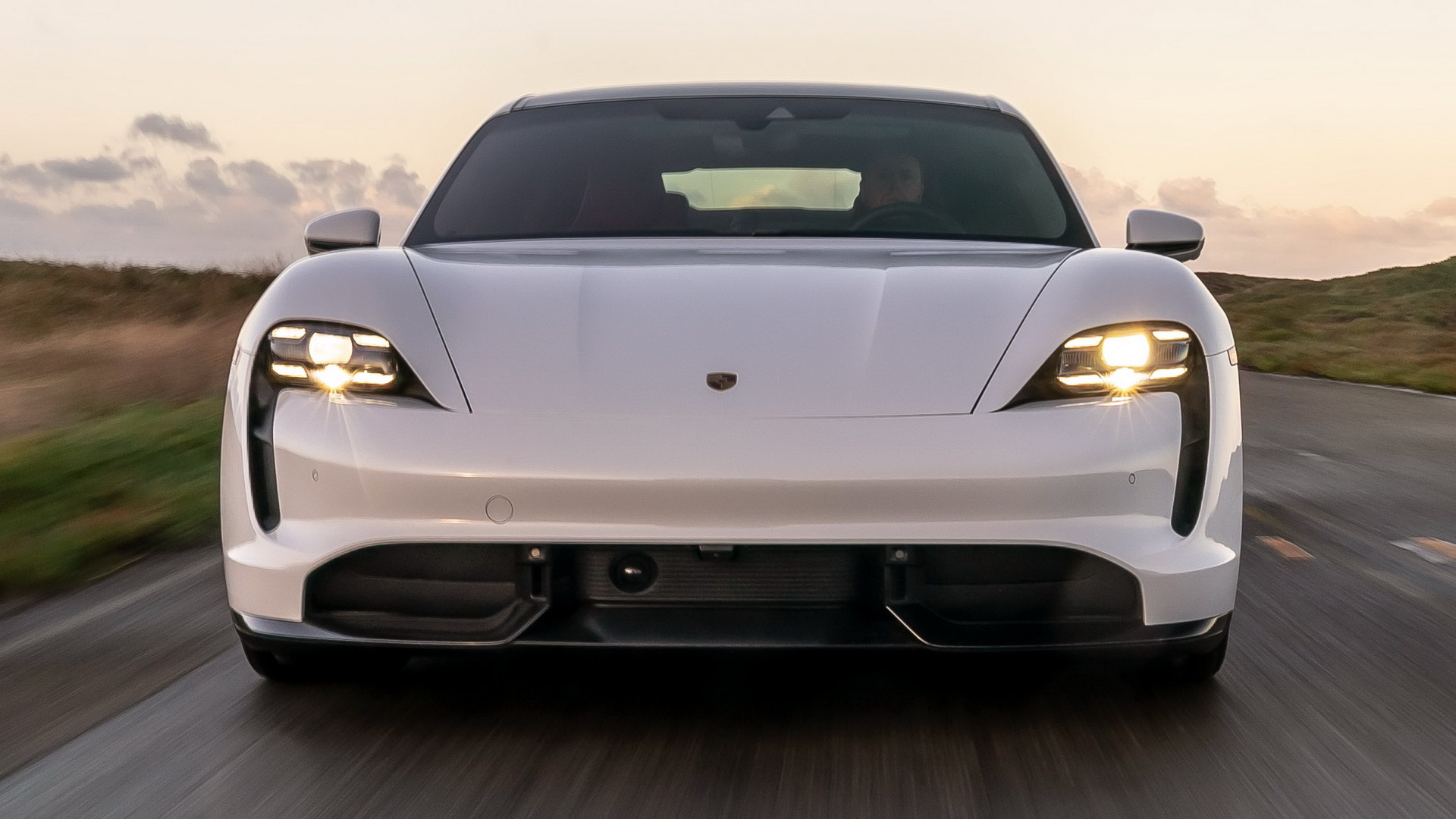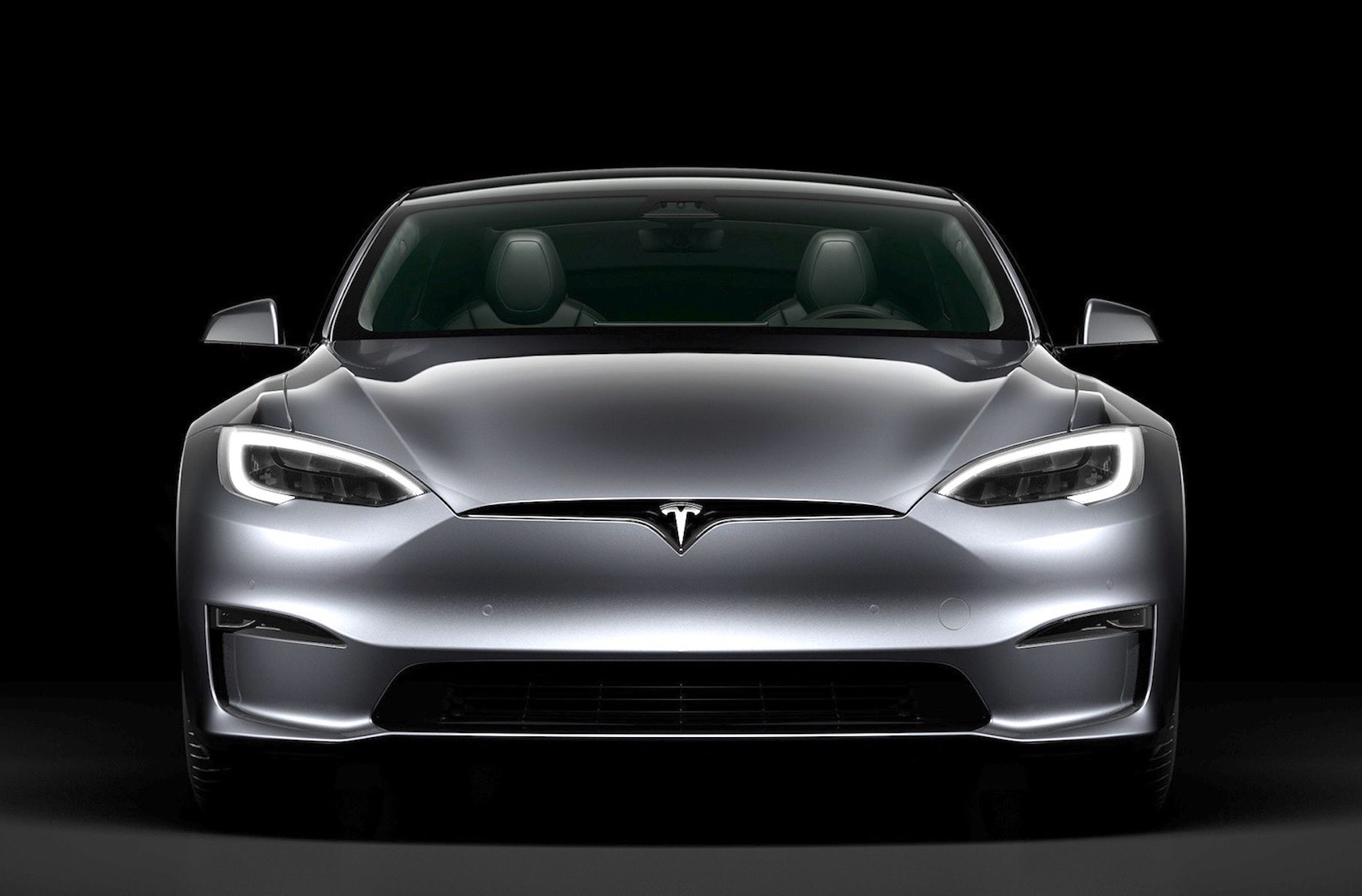Mercedes has finally lifted the camo veil on the EQS, the new electric sedan that’s designed to take on the Tesla Model S, Porsche Taycan and Audi e-tron GT.
But how does it stack up against those rivals? No one has been able to pull off the live comparison yet, but that hasn’t stopped us sifting through the specification of each to see where their strengths and weaknesses lie.
Styling & Dimensions
Mercedes began mentally preparing us for the first of its new-generation EVs with the 2019 Vision EQS concept. But it looks like a case of over promising and under-delivering. The production car isn’t bad looking, but it’s lost the voluptuous curves seen in the concept – and also in the Taycan and e-tron GT, both of which look more appealing to our eyes than the older, plainer, Model S.
We don’t yet know the size of the EQS’s wheelbase, but from the pictures it looks even longer than the others cars’ (the Audi and Porsche both measure 114-inches/2.9m between the wheels; the Tesla, 116.5/2.96m), which should mean it delivers even more interior space.
Video: 2022 Mercedes-Benz EQS Luxury EV Has 479-Mile Range, Opens And Closes Its Own Doors
The EQS is certainly the longest overall, at 207.2-inches (5265mm). The other three all measure less than 200-inches, and the Mercedes is also the tallest, by almost 3 inches. Yet despite that extra height, the EQS has the lowest drag factor. It gets a 0.20 Cd rating, compared with 0.21 for the Tesla, 0.22 for the Porsche, and a comparatively RV-like 0.24 for the Audi.
Interior And Infotainment
Open the door of each of the four cars and it’s the EQS that wins the wow war. In standard form the Benz EV uses the same 12.8-inch portrait touchscreen as the new S-class and runs the latest version of the company’s MBUX software. But we imagine many buyers will be seduced by the incredible 56-inch Hyperscreen upgrade. It features three displays under one piece of glass: a digital gauge pack ahead of the driver, a central touchscreen with haptic feedback, and a third screen just for the passenger.
In its latest incarnation the Model S swaps its familiar portrait screen for a large landscape display that’s better suited to watching movies. This is where you’ll also find the new virtual gear selector, now that Tesla has ditched the column stalk lever. And if you think that’s controversial, get a load of the yolk steering wheel. We understand it’s optional and buyers can choose a conventional round wheel instead.
Compared with the EQS and latest Model S, the e-tron GT and Taycan look decidedly conservative inside. But although they’re related, the Audi and Porsche manage to look very different from behind the wheel. The Audi has a relatively small central screen located high up on the dash, while the Porsche features an even wider digital instrument binnacle and two central touchscreens – one where the e-tron’s is located, and another, secondary screen on the sloping console.
The three German cars seat four (five, at a pinch), but Elon Musk claims the Model S will soon be available with space for seven. Even in five-seat guise it outpoints its rivals for trunk space with a massive 26.3 cu ft (744 liters) of luggage room, plus another 5.3 cu ft (150 liters) in the nose. The Taycan and Audi offer around half as much, but the EQS comes closer. There’s no frunk, but Mercedes says you can fit 21.5-27.2 cu ft (610-770 liters) of luggage behind the rear seats.
Under The Skin
The EQS range launches with two models: the single-motor, rear-wheel drive EQS 450 with 329 hp, and the bi-motor EQS 580 that sends 516 hp to all four wheels. The base car needs 6.2 seconds to reach 62 mph (100 km/h), while the 580 drops that to a more respectable 4.3 seconds. Both are limited to 130 mph (210 km/h). Taken in isolation, those numbers seem reasonably solid, but the reality is every one of its rivals has more power and more performance.
The Taycan is also available in entry-level, rear-wheel drive guise with 402 hp that takes 5.4 seconds to hit 62 mph, while the all-wheel drive Taycan 4S is a close match for the EQS 580 thanks to its 523 hp that enables it to clock 62 mph in 4.0 seconds dead.
Moving up the Taycan range, the Turbo delivers 671 hp on overboost, and the Turbo S, a thumping 751. Zero to 62 mph times are 3.2 seconds and 2.8 seconds respectively. The exclusively all-wheel drive e-tron GT quattro, on the other hand, has a combined power output of 523 hp with launch control activated, and the RS pumps out 637 hp in the same mode.
What does that mean at the lights? The Taycan Turbo accelerates to 62 mph in 3.2 seconds, while the Turbo S can hit that same mark in just 2.8 seconds. Now the Audi: the base Quattro gets to 62 mph 4.1 seconds, and, with overboost engaged, the RS e-tron can make the sprint in 3.1 seconds.
So the Taycan is faster, but don’t go popping those champagne corks just yet, Porsche fan boys, because Telsa is still the quarter mile king. The basic Model S Long Range has around 670 hp, and even that lowly version can sprint to 60 mph in 3.1 seconds.
Graduate to the Plaid and its crazy 1020 hp, and you can do the same run in just 1.99 seconds, according to Tesla. But the silliness doesn’t stop there. Stump up another $30,000 for the Plaid + and the horsepower count is boosted to over 1100 and the acceleration numbers fall further, though Tesla doesn’t say by how much. Both will do over 200 mph (322 km/h), comfortably outrunning the 161 mph (259 km/h) Taycans (both Turbo and S) and the 152 (245 km/h) mph e-tron GT, and its 155 mph (250 km/h) RS brother.
All of which makes the EQS look massively (and literally) off the pace. But as you can probably imagine, there’s more to come. Mercedes says it’s working an AMG-badged EQS with 751 hp, which should give the Taycan Turbo S a run for its money, even if it won’t be fast enough to see off the Tesla Plaid twins.
Batteries And Charging
Mercedes says the EQS comes with two battery options: a 107.8 kWh one aimed at long distance work, and a 90 kWh version for drivers spending most of their time in town. We don’t yet know the full range figures for every combination of battery and powertrain, but the single-motor EQS 450 paired with the bigger battery can cover 479 miles (771 km) on a charge according to the WLTP standards.
That’s considerably more than you’ll get from an equivalent single-motor Taycan with its biggest available 93.4 kWh battery, that’s rated at 225 miles (362 km) EPA and 301 miles (484 km) WLTP, while the all-wheel drive 4S with same battery is only good for 288 miles (463 km) WLTP and 227 miles (365 km) EPA. That falls to 281/212 miles (452/341 km) for the Turbo and a fairly dreadful 258/201 miles (415/323 km) for the Turbo S.
The e-tron isn’t much better. Its 93.4 kWh battery is good for 296 WLTP/238 EPA miles (476/383 km) when powering the GT, and 283/232 miles (455/373 km) in the RS.
Annoyingly for the Germans, Tesla mostly wins this battle, too. The Long Range’s estimated 412 mile (663 km) range is good enough to beat all but the EQS, and the Plaid’s 390 mile (628 km) unofficial rating means it can travel almost twice as far as the fastest Taycan without stopping. But the clear winner is the Plaid+, which can do 520 miles (837 km) before you need to plug it in.
And, of course, you’ve got the 20,000-strong Tesla Supercharger network on hand to make those stops as painless as possible. The Model S charges its 100 kWh battery at up to 250 kW thanks to a recent upgrade, while the Porsche and Audi can both accept 270 kW, and the EQS lags slightly behind at 200 kW.
The EQS’s Plug & Charge capability, where you simply attach the cable and charging begins automatically, helps redress the balance, but we’re a long way from the technology being available at every charging station.
Who’s The EV Daddy?
So, what do you think? Did Mercedes play it too safe with the EQS’s styling? Which luxury EV would get your money, or do you still prefer a traditional V8 under the hood of your luxury car? Leave a comment and let us know!




